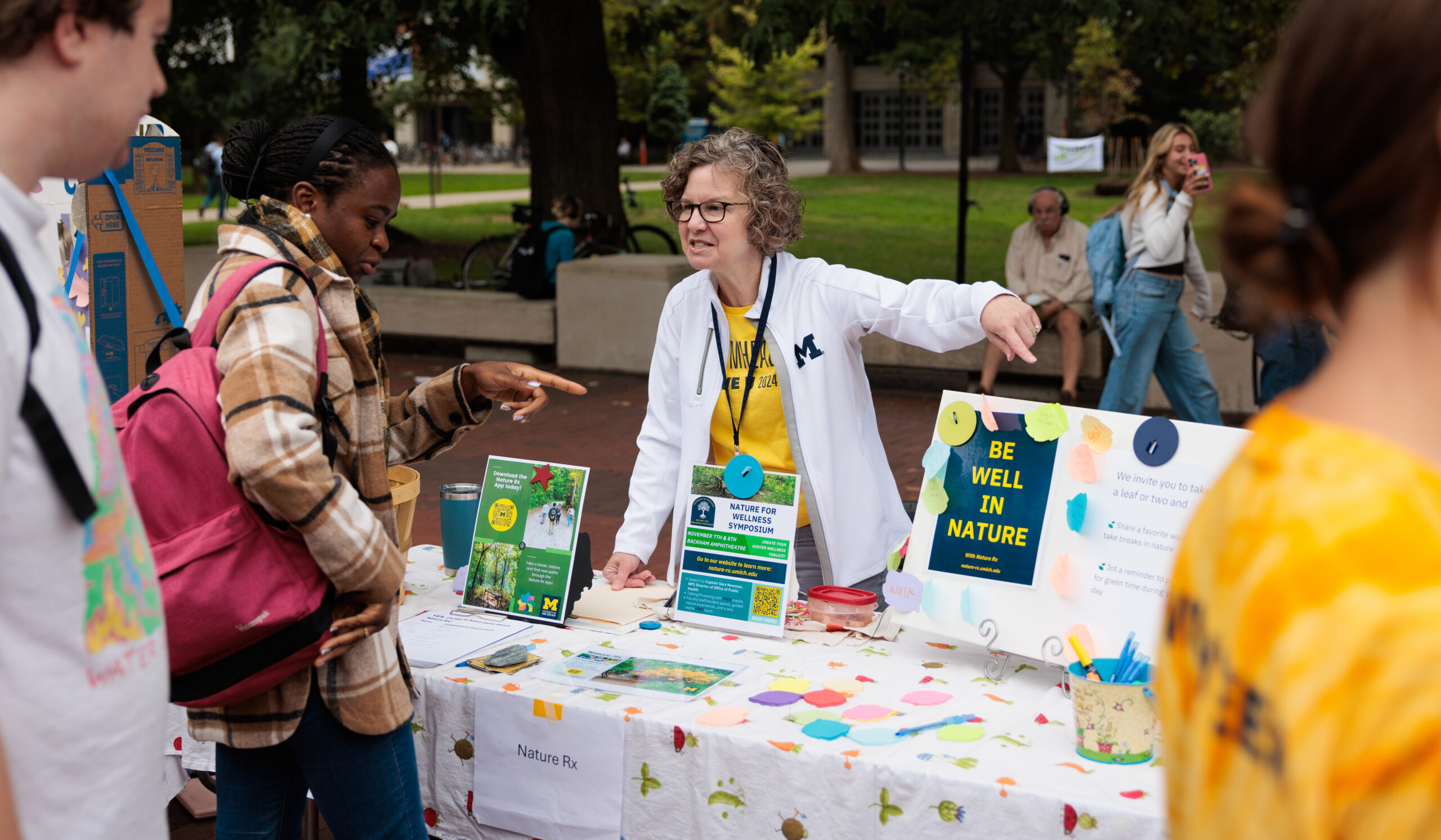In 2020, Ann Arbor, Michigan, set out with an ambitious goal: to become carbon neutral by 2030. Set by Melissa “Missy” Stults, PhD’16, Ann Arbor’s first sustainability and innovations director, city leaders are working with residents to make A2Zero a reality.
“This is hard. No one has figured out how to [reach] the carbon neutrality goal, let alone in a way that’s centering justice and equity, truly,” Stults says.
Ann Arbor decided to focus first on the Bryant neighborhood, where approximately 262 homes were built in the 1970s. Bryant is located in a flood area, and adjacent to the capital landfill and highway rings. Stults says residents’ energy burden is “mind-blowing,” with 24 percent of households spending 30 percent of their income on utility bills.
“[Bryant] is what we would often think of as an environmental justice neighborhood, and so we knew more so that if we were going to meet this audacious goal of carbon neutrality by 2030, it was going to be really hard to figure out how to do that in a neighborhood like Bryant, and so [we needed to] start in a neighborhood like Bryant,” Stults says.
Neighborhood decarbonization is done by applying a variety of resources to specific home and community problems, with some homes carbon negative, positive, and neutral, supplemented by wide-reaching improvements like solar energy. But leaders turned to residents to develop a just plan.
“That was so trust building, because their words were literally leading to the actions that they wanted to see, and no one knows their place better than them,” Stults says.
Immediate projects emerged from free energy assessments, such as insulation repair and replacing stoves that were leaking gas and risking residents’ lives. But other concerns that threatened resident buy-in, like gentrification, needed to be addressed as well.
“No one has decarbonized an existing neighborhood and gentrification does tend to follow the kinds of activities we’re talking about. We didn’t pretend that wasn’t true. . . . We got some funding and we had lawyers come in and help people write wills so there was intergenerational wealth and they could secure their homes,” Stults says, as an example of what it means to approach decarbonization with justice and equity.
Ann Arbor has partnered with the Community Action Network (CAN), a Washtenaw County-based nonprofit helping under-resourced neighborhoods, to ensure the community’s needs remain prioritized and help residents access resources. CAN is now leading Bryant’s decarbonization while the city begins planning for the next neighborhood, Pittsfield Village. C
AN operates out of the Bryant Community Center and puts on many community-building events and programs, including after school programs, food distributions, and community clean ups.
“[You] can’t go wrong by prioritizing your under-resourced communities, because it also helps address other issues that other social service providers are often having to try to stretch resources to make happen,” says Derrick Miller, ’06, CAN’s executive director.
More than 50 homes in the neighborhood have had energy improvements made so far, and the success quickly snowballed as residents inspired each other to get involved.
“To see people be able to thrive in a home is something I think we take for granted. To see this kind of change and then the advocacy that comes out of folks — they want this for their friends. They want this for other people,” Stults says.
Ann Arbor’s equitable approach to decarbonization is one community leaders hope other cities use as a model for community-focused climate action.
“This is a climate initiative but this is a health and safety initiative, this is a comfort initiative, an equity initiative, and all of those things are true,” Stults says. “People’s lives are fundamentally better because of this project.”
Katherine Fiorillo is the senior editor of Michigan Alum.





